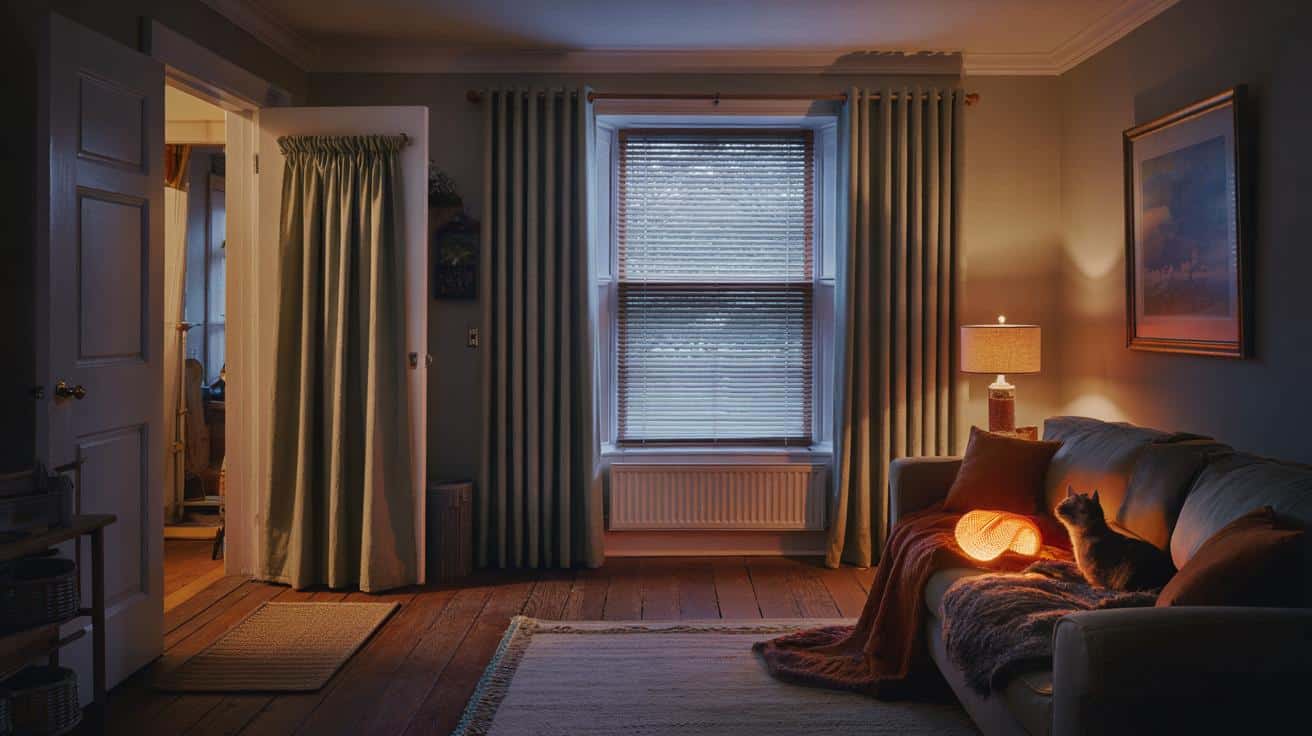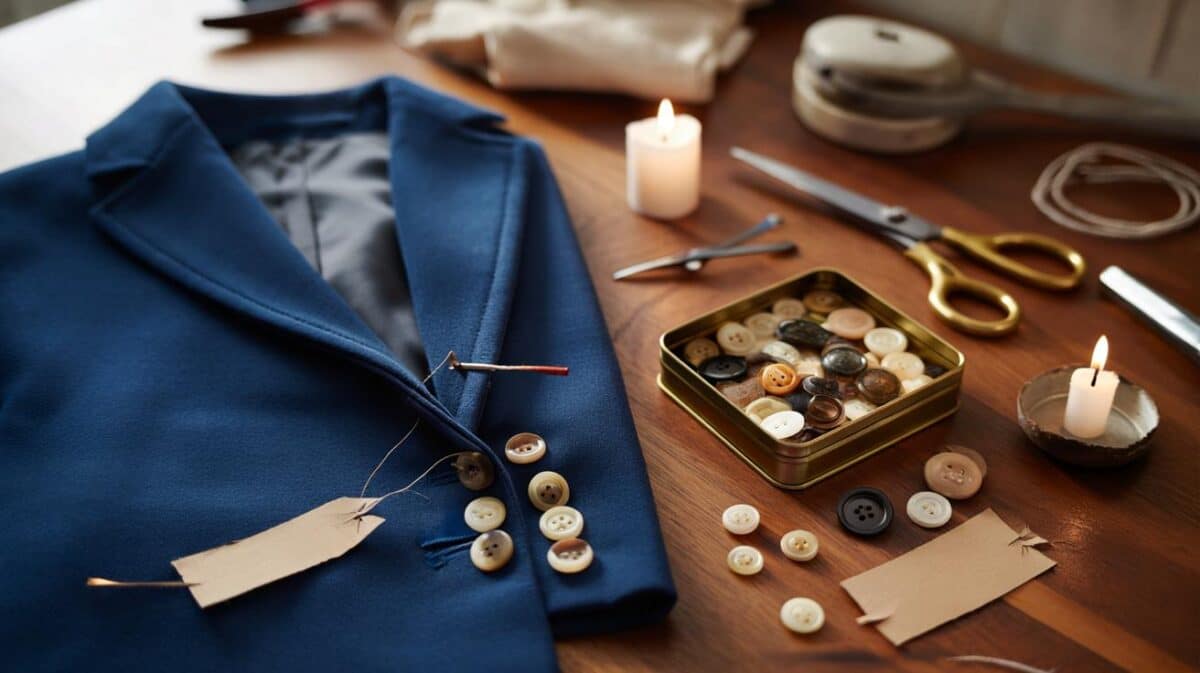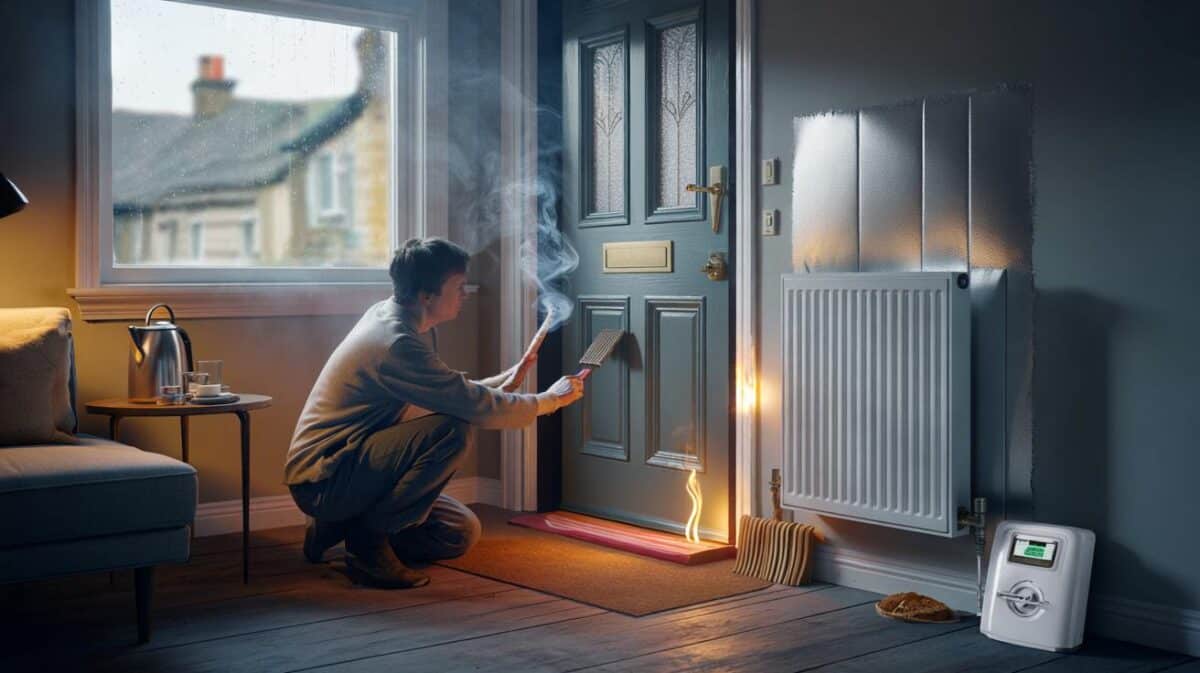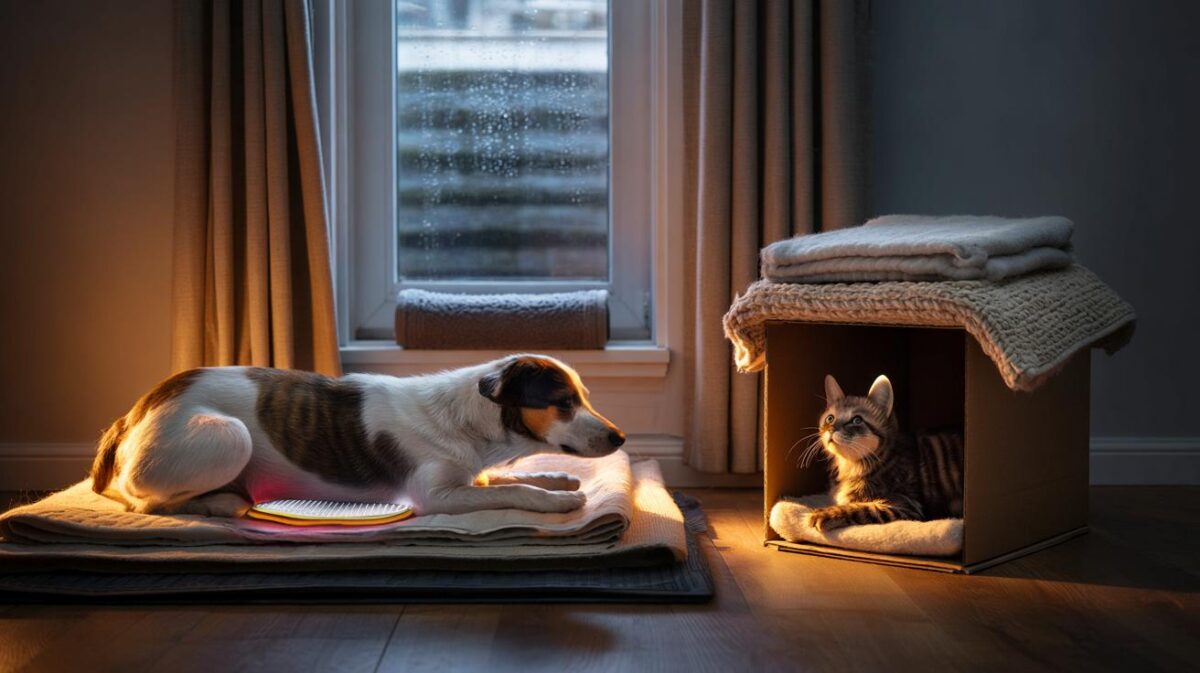Winter doesn’t just arrive in Britain. It sidles in through letterboxes, lifts the edges of old floorboards, and whispers under doors. The knee‑jerk response is to crank a heater or dream of a costly upgrade. There’s a quieter move that works better: layering the house itself like you would a winter outfit.
I watched the neighbour across the road tug heavy curtains across her bay window at dusk, a cat already claiming the warm patch by the sofa. She’d laid a second rug over the first and pinned a thick throw behind the door like a theatre curtain.
It felt less like décor and more like a ritual. *A way of telling the room to hold onto the day’s heat a little longer.* She wasn’t talking about clothes.
Dress the room, not just yourself
We talk about heating as if warmth is made, when for most homes it’s better conserved. Think of a room like a body in winter: your base layer slows heat escape, your mid‑layer traps air, your outer layer blocks wind. The home equivalent is glazing, textiles and draught control working together.
Old terraces, seaside flats, 30s semis — they leak heat in familiar places. Glass bleeds warmth, floorboards let cold crawl up, gaps around skirting, keyholes and letterplates pull warm air out like a siphon. **Heat loves an easy escape.** Give it resistance with fabric, air gaps and seals, and the room feels warmer at the same thermostat setting.
We’ve all had that moment when a room “suddenly” turns cosy after the curtains are drawn. That’s physics you can feel. A layer over a cold surface raises the mean radiant temperature — your skin reads warmth from nearby surfaces, not only the air. Close‑fitting blinds plus thick curtains create a still pocket of air that slows conduction and kills the chilly downdraft that slides off glass.
Layer where heat actually leaves
Start with windows. Pair a snug, cellular blind inside the frame with lined, floor‑length curtains on the outside. The blind kisses the glass; the curtain adds mass and seals the edges. If you can’t drill, tension rods and clip rings let you hang a fleece throw as a “secret” interlining behind existing curtains.
Now floors. A dense wool rug on a felt underlay plugs the cold that seeps between boards. Stack rugs if you like — a flat‑weave base for grip, a softer top for toes. Doorways deserve theatre: hang a full‑drop curtain over the hall door and add a brush draught excluder to the threshold. **Layer the biggest surfaces first: windows, floors, doors.**
Numbers make it real. Layered blinds and curtains can trim window heat loss by a chunk you’ll notice, and simple draught‑proofing saves many households tens of pounds across a season. One couple in a Leeds rental didn’t touch the boiler; they added a second rug, taped foam strip around the front door, clipped fleece to their curtains, and set a timer to close everything at dusk. The living room held two extra degrees by bedtime.
Habits and small fixes that stack up
Create predictable “warmth rituals”. Open everything to the light when the sun’s up, even in January, to bank a little solar gain. An hour before sunset, close blinds, draw curtains tight, place draught excluders, and shift seating off external walls by a hand’s breadth to cut radiant chill.
Common snags are simple. Don’t bury a heater behind a curtain; you heat the window, not the people. Vent moisture daily with quick, sharp air changes — two windows cracked for five minutes beats one left ajar all day. Let’s be honest: nobody actually does that every day. Aim for most days, especially after showers and cooking, so warmth isn’t swapped for damp.
Think in zones. Warm the seat you use, not the whole floor plan, with a low‑watt heated throw or a hot‑water bottle tucked into the cushion you’ll occupy. It’s astonishing how fast a room calms down when the draughts are tamed and the big surfaces stop radiating cold.
“Warmth is a story of surfaces, not just air,” says a building physicist friend. “Layer the cold things and the room feels kind, even before the thermostat moves.”
- Windows: cellular/honeycomb blinds plus lined curtains, closed at dusk.
- Doors: brush or rubber seals, a heavy curtain on a track or pole, and a letterbox flap.
- Floors: wool rugs over thick felt underlay; tape gaps if boards whistle.
- Gaps: self‑adhesive foam around frames; keyhole covers; silicone along skirting.
- Micro‑heating: heated throw, hot‑water bottle, or a small oil‑filled radiator by your seat.
The quiet tricks people don’t see
There’s a reason older homes used pelmets and door curtains. A pelmet at the top of a curtain stops warm air from diving behind the fabric and chilling at the glass. You can fake one with a shelf above the pole. A door curtain on a return track seals a leaky hall the way a scarf seals a coat.
Renting or on a tight budget? Shrink‑film kits turn single glazing into a discreet double‑skin for the price of a takeaway. Bubble wrap on basement windows works better than it looks. A fleece throw clipped behind a curtain is a five‑minute upgrade. **Close your curtains at dusk, every day, without fail.** The steady rhythm matters more than the fancy stuff.
Avoid the own goals. Don’t block trickle vents entirely; you need a trickle to fight condensation. Keep a safe gap around any heat source. Mop window condensation in the morning and give the room a brief cross‑breeze to reset. Soyons… no — we’ll keep it simple: do the small things often, not the big thing once and never again.
What warmth feels like when you get it right
A layered room changes how the evening lands. The rush of cold stops rolling off the glass, your ankles don’t ache near the door, and the sofa becomes the warmest address on the street. It’s not magic; it’s patience stitched into fabric and habit.
Friends will ask if you’ve upgraded something; you’ll shrug and point to the curtain that suddenly matters, the rug that pulled its weight, the door that finally behaves. Share it. The most generous idea this winter might be showing a neighbour how to clip fleece behind a curtain, or lending a spare draught excluder for a week. The quiet heat you keep is the best kind.
| Key points | Detail | Reader Interest |
|---|---|---|
| Layer the big surfaces | Pair cellular blinds with lined curtains; add pelmets; hang door curtains; stack rugs over felt underlay | Quick, visible upgrades with immediate comfort |
| Kill the draughts, not the ventilation | Foam and brush seals on doors and windows; keep trickle vents working; short daily cross‑breezes | Warmer rooms without damp or mould |
| Adopt evening rituals | Close layers at dusk; move seating off cold walls; focus heat on people with throws or bottles | Lower bills, cosier nights, habits you can keep |
FAQ :
- Do thermal curtains really make a difference?Yes. Heavy, lined curtains reduce radiant chill and slow heat loss, especially when paired with a close‑fit blind and a pelmet to stop air looping behind the fabric.
- I rent — what can I do without drilling?Tension rods for door and window curtains, clip rings to add a fleece interlining, self‑adhesive foam seals, shrink‑film for glazing, and rug‑plus‑underlay stacks.
- Will bubble wrap on windows actually help?On secondary rooms or basements, it’s a cheap double‑skin. Mist the glass, press the wrap, and trim — it adds an air layer that cuts the downdraft nicely.
- How do I stay warm without causing condensation?Seal obvious draughts, but do a five‑minute cross‑vent each morning and after steamy activities. Keep blinds slightly off the glass, and mop any overnight moisture.
- Are heated throws cheaper than running a radiator?Usually, yes. A 100–150 W throw warms the person, not the whole room, using a fraction of the power of a big heater when you’re sitting still.








